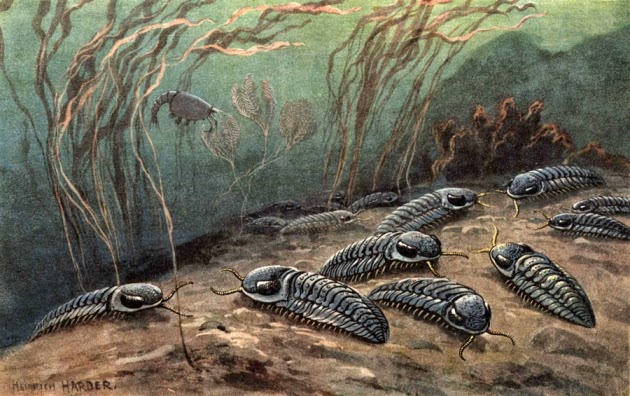
Earth’s greatest extinction event happened in a one-two punch 252 million years ago. Research now suggests that the second pulse of extinction, during which nearly all marine species vanished from the planet, happened in the wake of huge volcanic eruptions that spewed out carbon dioxide and made the oceans more acidic.
The work, published in Science1, is the latest to try to pinpoint the causes of the ‘Great Dying’, at the end of the Permian period. The study uses chemical evidence in rocks from that period to calculate how quickly ocean chemistry shifted.
Volcanoes in Siberia belched so much CO2 in such a short period of time that the oceans simply could not absorb it all, says team leader Matthew Clarkson, a geochemist at the University of Otago in Dunedin, New Zealand. Within just 10,000 years, pH levels in at least some of the world’s oceans plummeted.
“There was already enormous pressure on life on the oceans,” Clarkson says. “And suddenly we have what appears to be a rapid volcanic eruption, the final blow that drove the acidification.”
Reflections in the water
Today, oceans are becoming more acidic as a result of the large amounts of CO2 produced by human activities such as the burning of fossil fuels; the average pH has dropped by 0.1 units since the beginning of the Industrial Revolution. The Great Dying might represent a worst-case scenario for the future if CO2 emissions continue to rise, says Clarkson.
Other researchers have proposed all sorts of ideas for what caused the end-Permian extinction, from oxygen-starved oceans to methane-belching microbes. Top contenders have included both the Siberian volcanoes and acidifying oceans, separately or in sequence as the new study describes. In 2010, a study that examined calcium isotopes in ancient rocks found that oceans got more acidic during the end of the Permian period2.
But the latest work measures pH more directly than before, says Clarkson. His team looked at the ratios of boron isotopes in Permian-age rocks from the United Arab Emirates. Boron exists in sea-water in two forms, the relative amounts of which are controlled by how acidic or alkaline the water is. By measuring the levels of each boron isotope, the researchers could directly calculate the pH of the water that once covered the marine rocks.
The team saw little change in acid levels during the first phase of the Permian extinction, which lasted about 50,000 years. But during the second, much faster pulse, pH levels dropped by about 0.7 units over 10,000 years, Clarkson says.
That is probably because the Siberian volcanoes were putting out so much CO2 so quickly, the researchers argue. “It’s such a rapid change, the ocean can’t buffer the CO2 increase,” Clarkson says.
Many questions remain. The team cannot explain definitively what caused the first phase of extinction, which seems to have happened before the volcanoes began to erupt. And the researchers need to confirm whether Permian marine rocks in other parts of the world — not just those in the United Arab Emirates — also show the same sharp ocean acidification during the second extinction pulse.
“We’ve still got quite a lot of work to do,” says Clarkson. “Everyone always wants the smoking gun for these things.”
Andy Ridgwell, an earth systems scientist at the University of Bristol, agrees. “In principle the approach is good,” he says. “But there may be different explanations for what they’re seeing.” The end of the Permian was so geochemically complicated, he says, that untangling the various factors may take some time yet.
Note : The above story is based on materials provided by Nature. The original article was written by Alexandra Witze.










